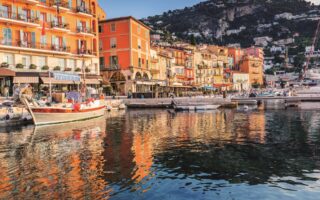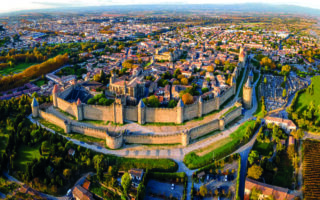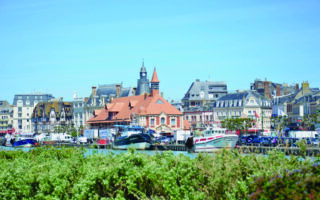Coastal Property in Languedoc-Roussillon
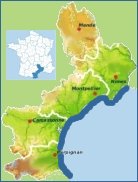

Property trends on the Languedoc-Roussillon Mediterranean Coast
“I have just bought somewhere in France”, as the words hang in the air, you can see the listener conjuring up an image in their minds – rural, old, isolated, big garden, in need of repair. Visions from ‘A year in Provence’, through ‘Chocolat’ and ‘A place in France’ flood their mind, along with the prospects of cheap holidays and much wine. Then see that pleased look on their face shatter as you tell them that it is an apartment in a seaside town.
It is a general truth that the majority of people looking for their dream home in the south of France rarely consider the ‘apartment option’. When it comes to buying in Spain, Cyprus or Madeira, people see nothing strange in it. It’s almost as if some law had been passed that non-French people were only allowed to buy ancient houses in the French countryside that needed repair and that would be run in conjunction with either a gite or B&B business! In all serious, though, the new apartment developments along the Mediterranean coast of the Languedoc-Roussillon have a lot of practical advantages: there is virtually no individual maintenance; there are unlikely to be any territorial disputes; they are often more secure than houses, especially if not on the first floor; they are much better insulated and much cheaper to heat; there are often communal swimming pools and gardens and, best of all, someone else is charged with maintaining these, so you can sit back and enjoy your holiday instead of doing chores!
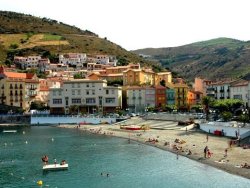
the small fishing villages of Cerbère
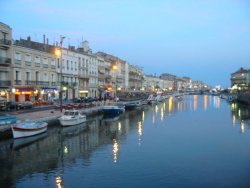
the bustling port town of Sète
Furthermore not all of the property developments along the coast only feature apartments; some have villa options too, allowing you to still enjoy all the benefits of a new, hassle-free property whilst having a bit more outdoor space. And for those who are still keen to go along the old house/ renovation route, there is still some (more limited) scope for this in the old centres of Languedoc-Roussillon’s coastal towns and villages (but do not expect to have any gardens here, and make sure you find out about planning permission for roof terraces before you buy).
Languedoc-Roussillon’s coastline runs for 250 kilometres along the Golfe de Lion from the rocky hills of the Côte Vermeille along the Spanish border to the flat wetlands of the Camargue in Provence. In between there are acres of sandy beaches, turquoise-blue water, saltwater lagoons, pretty coastal towns, ancient cities and modern beach resorts with every possible waterside entertainment catered for. The Languedoc-Roussillon certainly offers enough choice to suit everyone’s Mediterranean dreams – check out our full report on Languedoc-Roussillon beaches to find the ones that suit your needs.
Of course certain coastal areas have their own special cachet. For many years the southern most coastal area, the Côte Vermeille, has been a firm favourite with second homeowners. This very Catalan part of the Languedoc-Roussillon certainly has its charm – the old towns of Collioure, Port-Vendres, Banyuls-sur-Mer and Cerbère are rather appealing with their narrow streets and ochre-toned painted buildings. Certainly Collioure has seen a dramatic shift in its status over the last century, from a fairly unknown though busy fishing village popular with the likes of Matisse and Picasso in search of the perfect light to become the epicentre of the Côte Vermeille property rush in the past 15 years. Property prices in Collioure, in particular, went ballistic during the first half of this decade, with one development reaching a reported €6000 per square metre at one point! Things appeared to have calmed down a bit now since the 2008/09 econoic crisis, however, and you’re more likely to see an average of between €3000 – 4000 per square metre. This still makes Collioure the most expensive coastal town in the Languedoc-Roussillon, but it does have that perfect combination of being very photogenic, and having a laid-back chic arty feel with proximity to both the airport at Perpignan and that of Girona across the Spanish border.
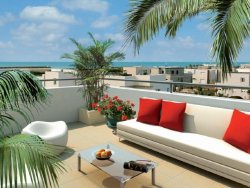
artist’s impression of development at Sète
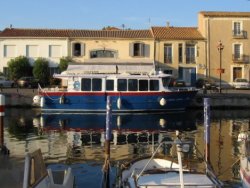
traditional fisherman’s cottages at Marseillan
Those property hunters keen to find more of that upmarket coastal bohemia should also consider the small towns and villages dotted along the Thau Lagoon, south of Montpellier. Though technically not coastal as they are on the west side of the lagoon, places such as Marseillan, Bouzigues, Meze and Balaruc are simply gorgeous. Here at portside you will find that much of the old traditional fishing village character has been retained, with pretty winding terraced streets packed with rather lovely townhouses, whilst on the outskirts of these villages there are some magnificent architect designed villas with large gardens and pools. Marseillan is my personal favourite for its quiet glamour with some superb restaurants and bistros along the port and home of the Noilly Prat vermouth distillery, whilst Bouzigues is a must for seafood gourmands.
If what you want is a modern apartment with killer views of the sand and the sea then head to any one of the larger seaside resorts, such as Argelès-sur-Mer, Canet-Plage, Le Cap d’Agde, Le Grau-du-Roi or La Grande Motte (whose iconic 1960s futuristic buildings you will either love or hate). Here is where you will find some of the swankier developments coming onto the market – an ideal investment for those who like their beach life to come with lots of choice for both daytime and evening activities and entertainment.
And for those who’d like to have all of the above but with a little more history and less of the modern, then you should start your search in either Gruissan, Sète or Agde. These large towns have traditions going back centuries and fascinating histories that have shaped the communities who live there. Over the years their fortunes and image have changed, making them less popular than other areas, but at comparatively lower property prices you could get a lot more for your money and be pleasantly surprised. Sète, in particular, is due for a revival and has recently seen large-scale redevelopment and sprucing up of its beachfront.
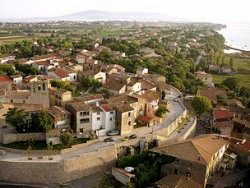
the traditional circular village of Balaruc
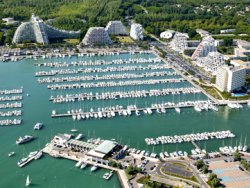
the iconic buildings at La Grande Motte
As far as general trends in the coastal property market goes, you will no doubt appreciate that you will pay more for property here than in inland locations. Naturally those places within easiest access to the cities of Narbonne, Perpignan and Montpellier are going to be more expensive, and especially so of the latter two where there are also airports. However, the better the access the greater the investment potential for holiday rentals and for selling on in the future. Having said that it’s probably true to say that, with a discerning eye, you’d be hard pressed to buy a coastal property that you couldn’t make some money off – holidaying on the coast is simply that popular! And the A9 motorway runs the length of the Languedoc-Roussillon coastline, so access really isn’t a problem, apart from the weekends at either end of the big summer break where long traffic jams tend to feature across France! Renting out your coastal property is also fairly straight forward with many estate agencies located in coastal towns specialising in this area; and some of the large scale developments also have a leaseback scheme tied into your property which guarantees a certain annual return (do make sure you do your research and sums with this kind of investment.)
All in all, the Languedoc-Roussillon coastline has a lot going for it. It has always been a popular holiday destination amongst the French and we predict that more people who used to look to take long-haul summer vacations will start to look closer to home for their holidays in the years to come, so now might be a good time to invest in your perfect home by the sea. But with such a large choice of locations and type of property, my advice would be to come out here, take some time to get a feel of the different areas and then work with a great agent to find the property and the beach that suits you!
Greca Sandford
Share to: Facebook Twitter LinkedIn Email
More in activity, beach, businesses, garden, renovation, summer, wine
By FrenchEntrée
Leave a reply
Your email address will not be published. Required fields are marked *

